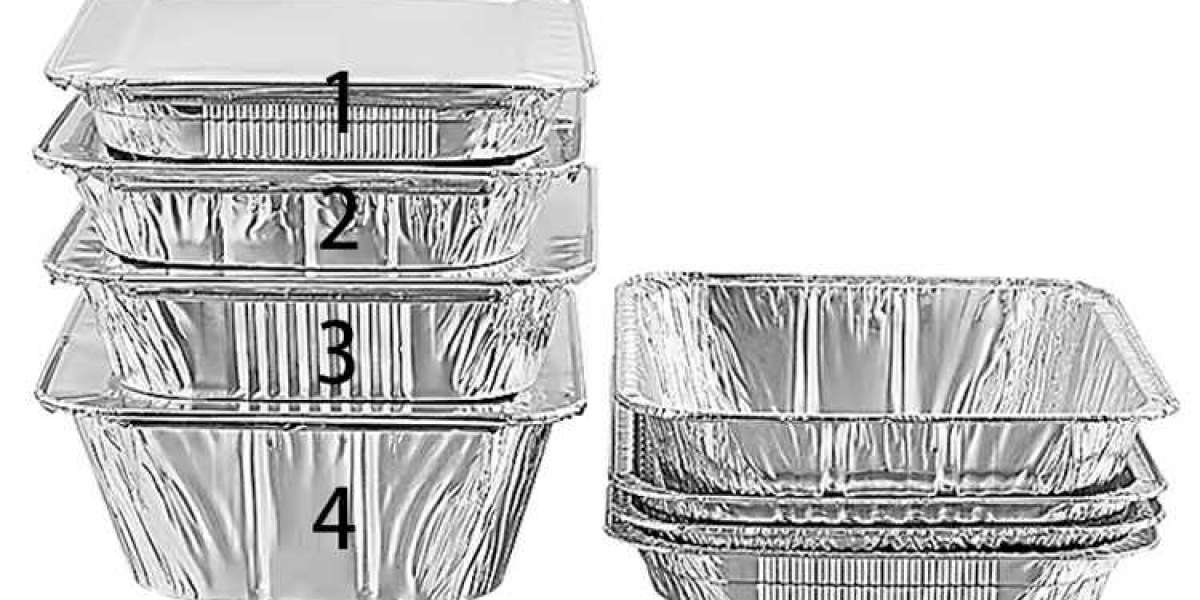Understanding Aluminum Takeout Containers
Material Composition and Design
Aluminum takeout containers are crafted from thin, malleable sheets of aluminum alloy, typically ranging between 0.03 mm to 0.2 mm in thickness. Their lightweight construction prioritizes portability over structural rigidity, making them ideal for temporary food storage. Unlike heavy-duty bakeware, these containers often lack reinforced edges or heat-resistant coatings, which impacts their oven compatibility.
Common Types of Aluminum Food Packaging
From lidded clamshells to compartmentalized trays, aluminum takeout containers come in myriad forms. Some feature anti-corrosion layers or laminated finishes for grease resistance, while others remain uncoated. The presence of additional materials—like plastic seals or paper labels—further complicates their heat tolerance.
Oven Safety Basics
How Oven Heat Affects Different Materials
Ovens generate dry, ambient heat that interacts uniquely with metals. Aluminum’s high thermal conductivity allows rapid heat distribution, but its low melting point (660°C/1220°F) is rarely the primary concern. Instead, warping at lower temperatures (around 300°C/572°F) poses a more immediate risk.
Key Temperature Thresholds for Aluminum
Most disposable aluminum containers tolerate temperatures up to 220°C (428°F) briefly. Prolonged exposure beyond this range risks compromising their shape and safety. Always cross-reference manufacturer guidelines, as thickness and alloy blends affect performance.
The Science of Aluminum Under Heat
Metallurgical Properties of Aluminum
Aluminum’s crystalline structure expands when heated, creating microscopic stress points. Repeated heating cycles can fatigue the metal, leading to cracks or tears. This “thermal cycling” effect is minimal in single-use scenarios but critical for reused containers.
Thermal Conductivity vs. Structural Integrity
While aluminum excels at transferring heat evenly, its thin gauge in takeout containers makes it prone to hotspots. Uneven heating can scorch food or weaken the container’s base, especially under heavy dishes like casseroles.
Manufacturer Guidelines: What Do Labels Say?
Decoding Oven-Safe Symbols and Warnings
Look for stamped icons like a wave (microwave-safe) or a furnace (oven-safe). Absence of these symbols usually indicates the container is designed for cold storage or short-term microwave use only.
Risks of Ignoring Usage Instructions
Using non-oven-safe containers can release harmful aluminum oxide particles or cause melting. In extreme cases, contact with heating coils may trigger electrical arcing in electric ovens.
Temperature Limits: How Hot Is Too Hot?
Standard Safe Ranges for Aluminum Containers
Aim to keep oven temperatures below 200°C (392°F) for standard containers. Specialty anodized or coated aluminum bakeware may withstand higher heats, but takeout variants rarely include these upgrades.
Variables That Influence Heat Tolerance
Container thickness, food moisture content, and oven type (conventional vs. convection) all play roles. A water-heavy dish, like soup, buffers heat better than dry items like roasted vegetables.
Potential Risks of Oven Use
Warping and Deformation
Thin aluminum bends easily under heat, potentially spilling contents or disrupting airflow. Warped containers may also stick to oven racks, complicating removal.
Chemical Leaching Concerns
High heat accelerates ion transfer between aluminum and acidic foods (e.g., tomato sauce). While minimal leaching isn’t toxic, it can alter food taste and isn’t recommended for frequent use.
Fire Hazards and Spark Risks
Foil edges curling into heating elements can ignite grease residue. Gas ovens pose fewer spark risks than electric models, where exposed coils contact metal more directly.
Best Practices for Safe Oven Use
Preheating Precautions
Never place aluminum takeout containers in a preheating oven. Sudden temperature shocks exacerbate warping. Insert them only after the oven reaches the target temp.
Ideal Rack Positioning
Center the container on the middle rack to avoid direct radiant heat from above or below. Use a baking sheet underneath for added stability and spill containment.
Avoiding Direct Contact with Heating Elements
Maintain a 5cm buffer between foil edges and electric coils. In gas ovens, ensure flames don’t lick the container’s sides.
Food Types Matter: What Should You Avoid?
Acidic Foods and Corrosion Risks
Citrus-based marinades or vinegar-heavy dishes react with aluminum, creating a metallic aftertaste and pitting the container’s surface. Opt for glass when reheating such foods.
High-Fat Content and Smoke Points
Greasy foods can overheat thin aluminum, causing smoking or charring. Line containers with parchment paper to minimize direct contact with fats.
Alternatives to Aluminum Takeout Containers
Oven-Safe Glass and Ceramic Options
Pyrex or stoneware dishes offer superior heat retention and non-reactive surfaces. Their transparency allows easy monitoring of food without opening the oven.
Silicone and Parchment Solutions
Flexible silicone mats or pre-cut parchment sheets provide non-stick surfaces for roasting. Pair them with rimmed baking sheets for stability.
Myth Busting: Common Misconceptions
“All Aluminum Is Oven-Safe”
Heavy-duty foil ≠ takeout containers. The latter’s structural compromises (thin walls, seams) limit their heat resilience despite similar material composition.
“Reheating Equals Baking” Fallacy
Warming a slice of pizza at 150°C differs from baking a lasagna at 220°C. Duration and temperature intensity both dictate container safety.
Environmental and Health Considerations
Recycling Aluminum vs. Single-Use Risks
While aluminum is infinitely recyclable, scorched or greasy takeout containers often get rejected by recycling facilities. Hand-wash lightly used ones for reuse.
Long-Term Health Implications
Occasional aluminum exposure isn’t hazardous, but chronic ingestion (via frequent leaching) may contribute to neurological concerns. Moderation is key.
FAQs: Your Questions, Answered
Can You Broil in Aluminum Containers?
Broiling’s intense top-down heat risks melting container rims. Use cast iron or stainless steel for broiler-safe results.
What About Convection Ovens?
Convection fans distribute heat more evenly, reducing hotspot risks. However, lower the temperature by 15°C to account for airflow efficiency.
Conclusion: Smart Choices for Safe Cooking
While aluminum takeout containers offer convenience, their oven suitability hinges on temperature control and situational awareness. Prioritize manufacturer guidelines, avoid acidic foods, and embrace reusable alternatives for high-heat applications. By balancing practicality with safety, you can savor your leftovers without culinary mishaps!




